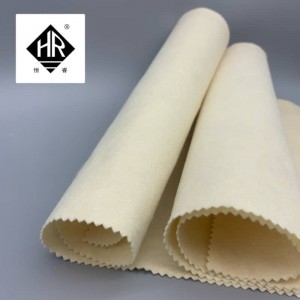1, high temperature resistant cloth in 360 degrees Celsius under the ultra-high temperature does not burn, does not aging; Flame retardant fabrics can burn under high temperature flame.
2, flame retardant fabric after the fire source leaves the flame can be extinguished by itself; The high temperature resistant fabric will not extinguish itself after the flame source leaves the flame.
3, flame retardant fabric is made of cotton, polyester and other raw materials; The high temperature resistant fabric is made of high quality imported glass fiber.
4, high temperature resistant cloth can resist the corrosion of almost all pharmaceutical items, in strong acid and alkali conditions do not aging and deformation; Flame retardant cloth has no such function.
Heat insulation refractory refers to high porosity,Insulating fabric low volume density, low thermal conductivity of refractory. Heat insulation refractory is also known as light refractories. It includes heat insulation refractory products, refractory fiber and refractory fiber products.Insulating fabric
Heat insulation refractory is characterized by high porosity, generally 40% ~ 85%; Low volume density, generally less than 1.5g/cm3; Low thermal conductivity, generally less than 1.0W(m· K). It is used as the thermal insulation material of industrial kiln, can reduce the heat loss of furnace, save energy, and can reduce the weight of thermal equipment. Thermal insulation refractory mechanical strength, wear resistance and slag erosion resistance is poor, should not be used in the bearing structure of the furnace and direct contact with slag, charge, molten metal and other parts.
Heat insulating refractory product Insulating fabric
Heat insulation refractory products refer to refractory products with porosity not less than 45%. There are many kinds of thermal insulation refractory products. The main classification methods are as follows:
(1) According to the service temperature is divided into low temperature insulation refractory (service temperature is 600 ~ 900°C), medium temperature insulation refractory (service temperature is 900 ~ 1200°C) and high temperature insulation refractory (service temperature is greater than 1200°C).
(2) According to the volume density is divided into general light refractories (volume density of 0.4 ~ 1.0g/cm3) and ultra-low light refractories (volume density less than 0.4g/cm3).
(3) According to the raw material is divided into clay, high aluminum, silicon and magnesium heat insulation refractory materials.
(4) According to the production method, it is divided into burnout adding method, foam method, chemical method and porous material method and other thermal insulation refractory materials.
(5) according to the shape of products is divided into shaped heat insulation refractory products and amorphous heat insulation refractory products.
Thermal insulation refractory products and dense refractory products are different, the main methods are burnout addition method, foam method, chemical method and porous material method:
Post time: Sep-24-2022

